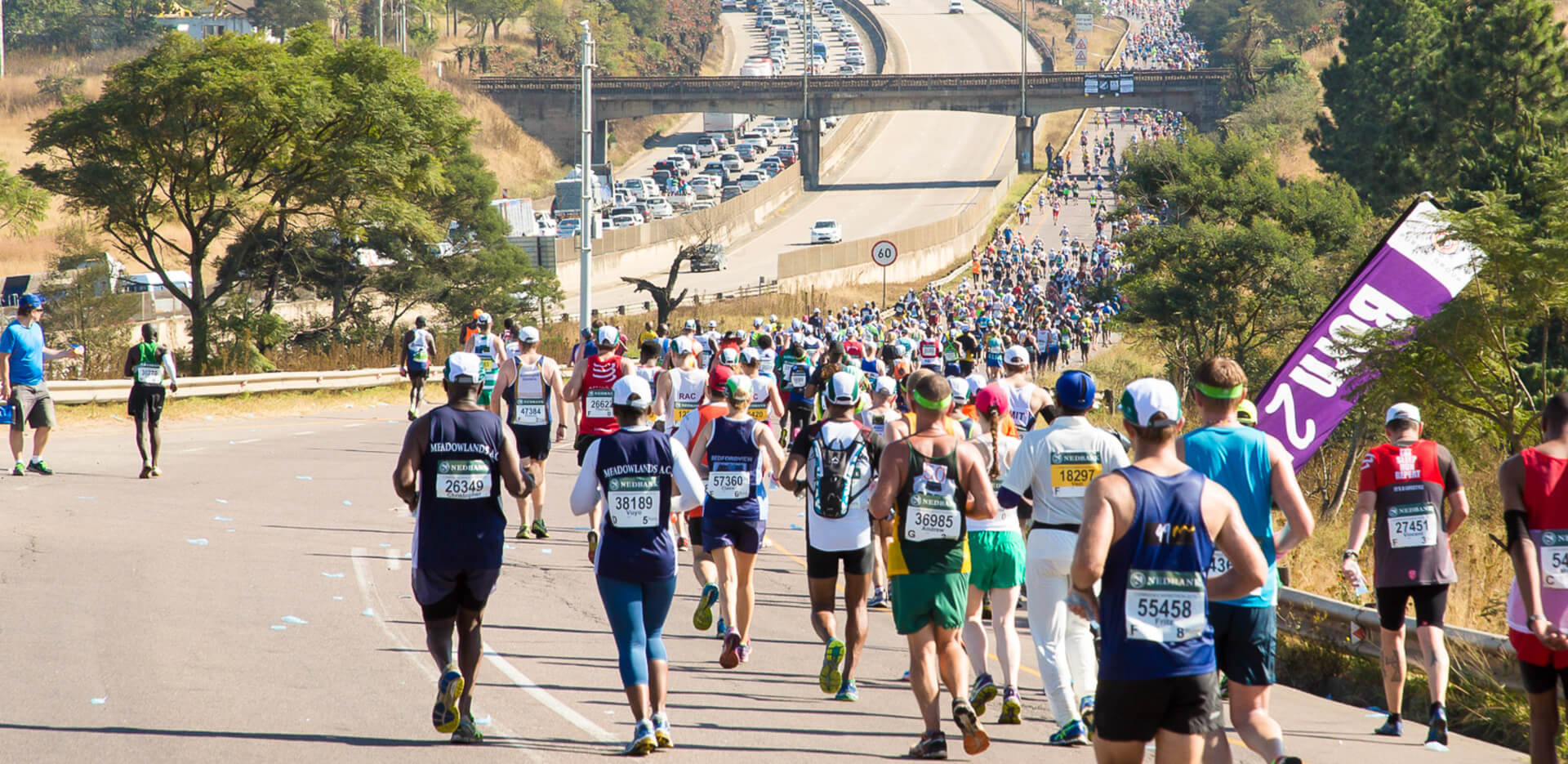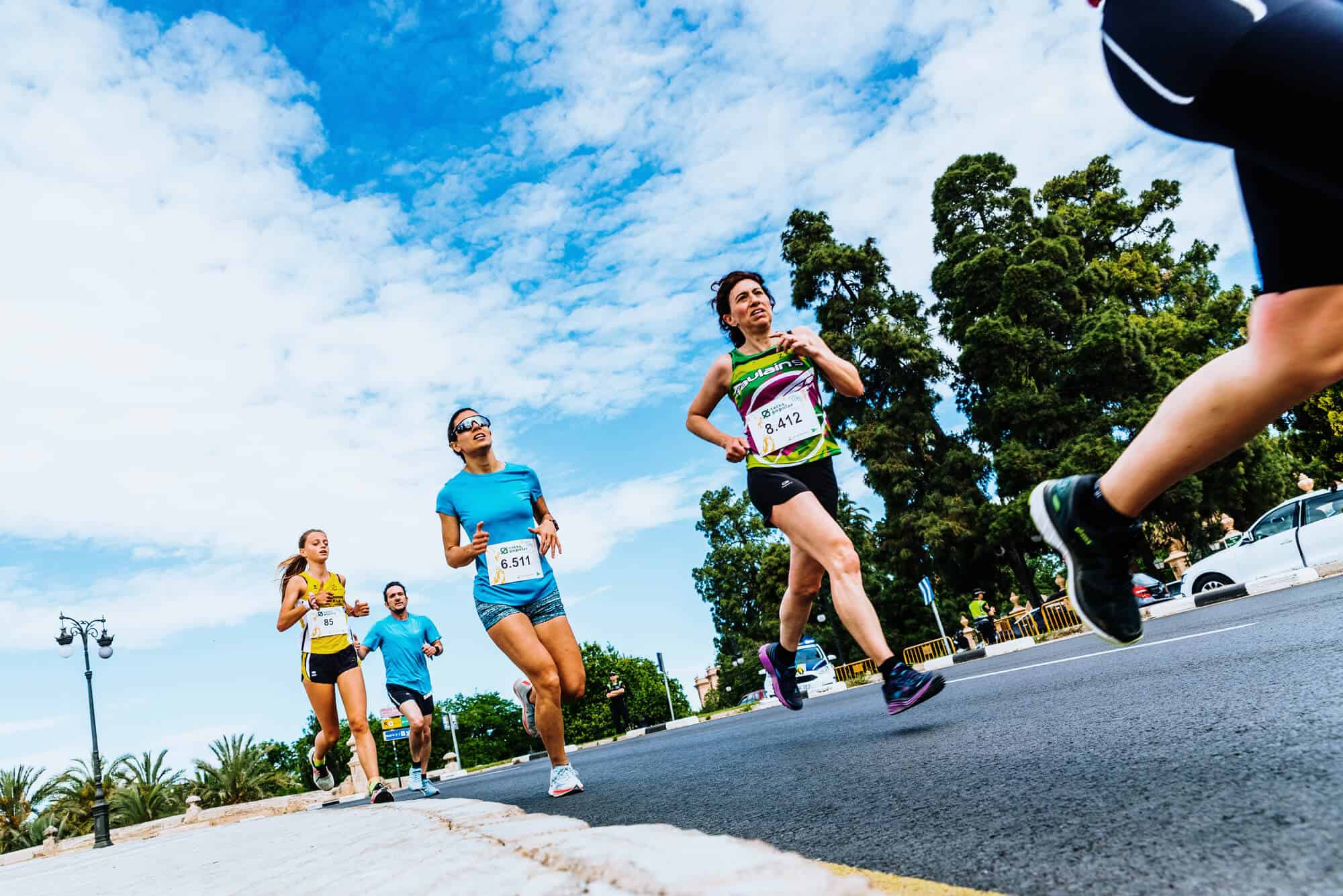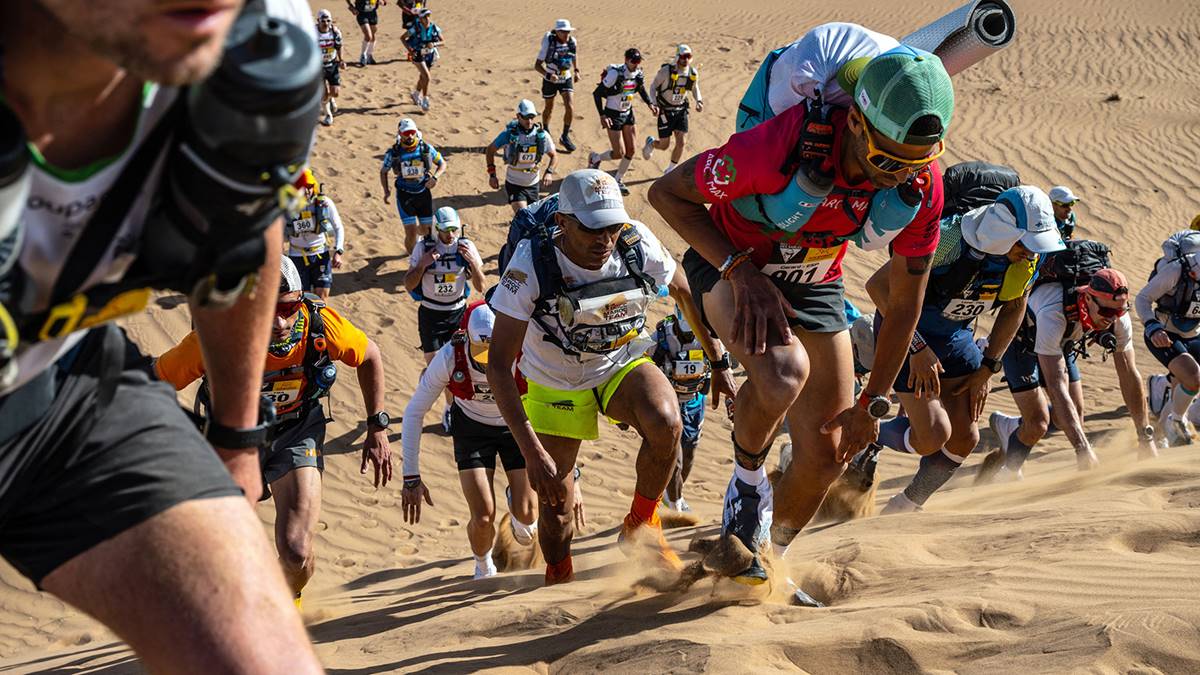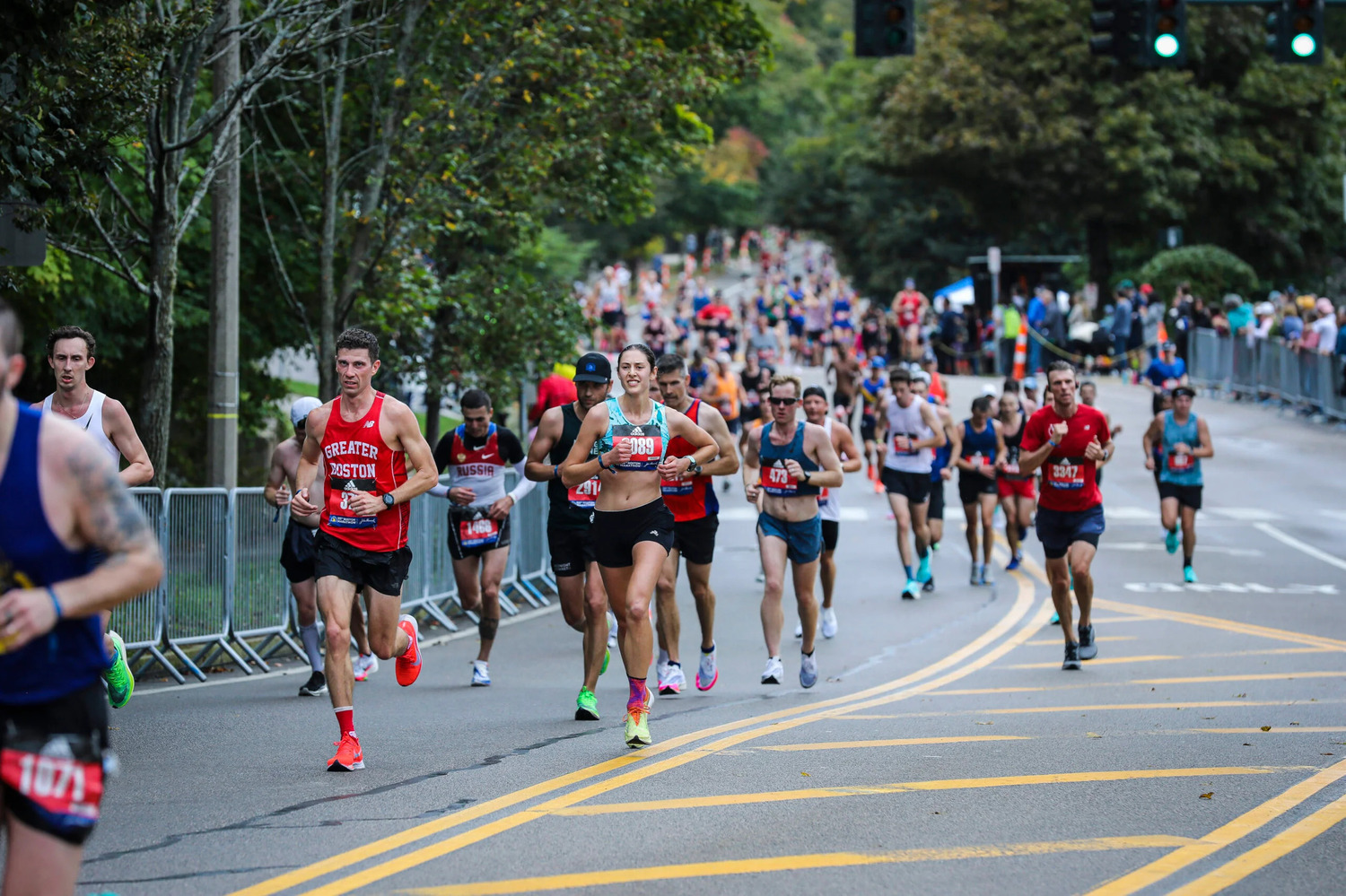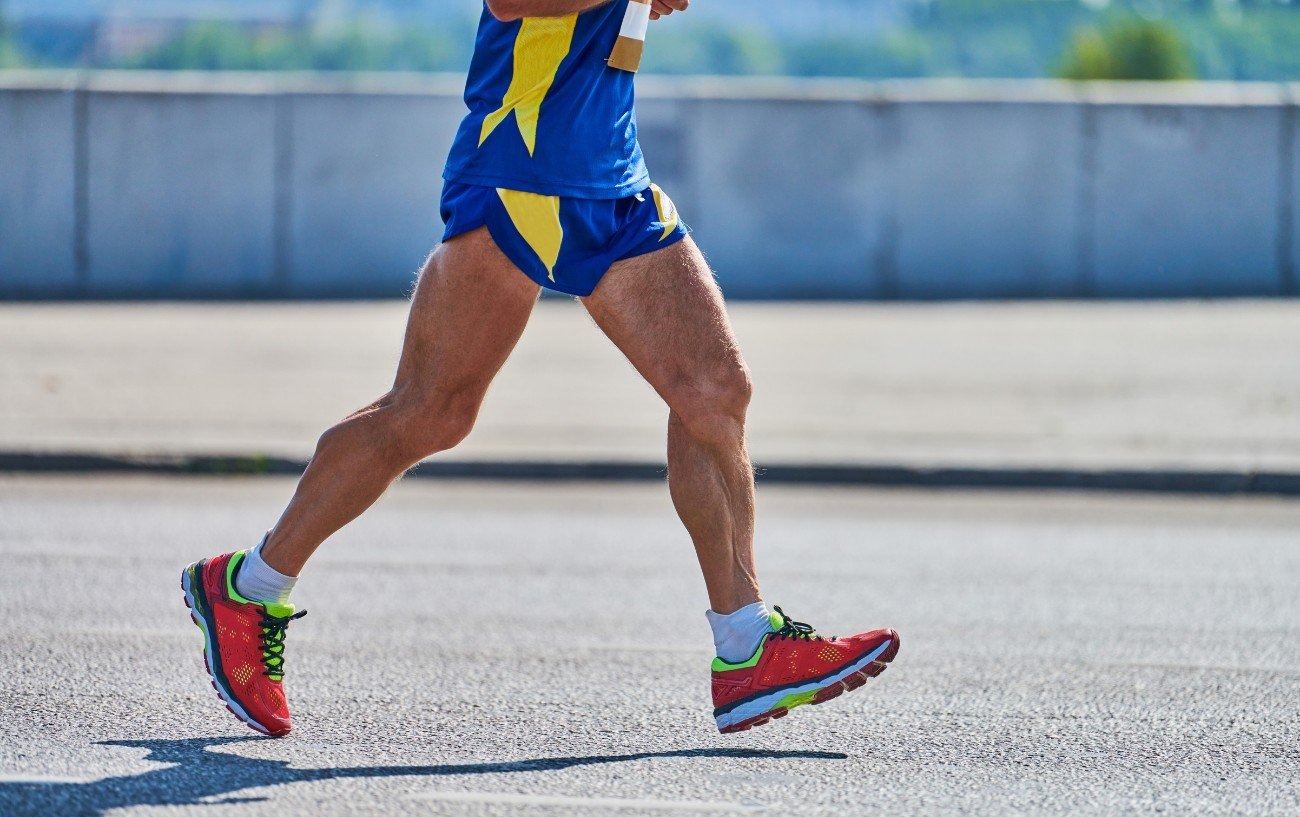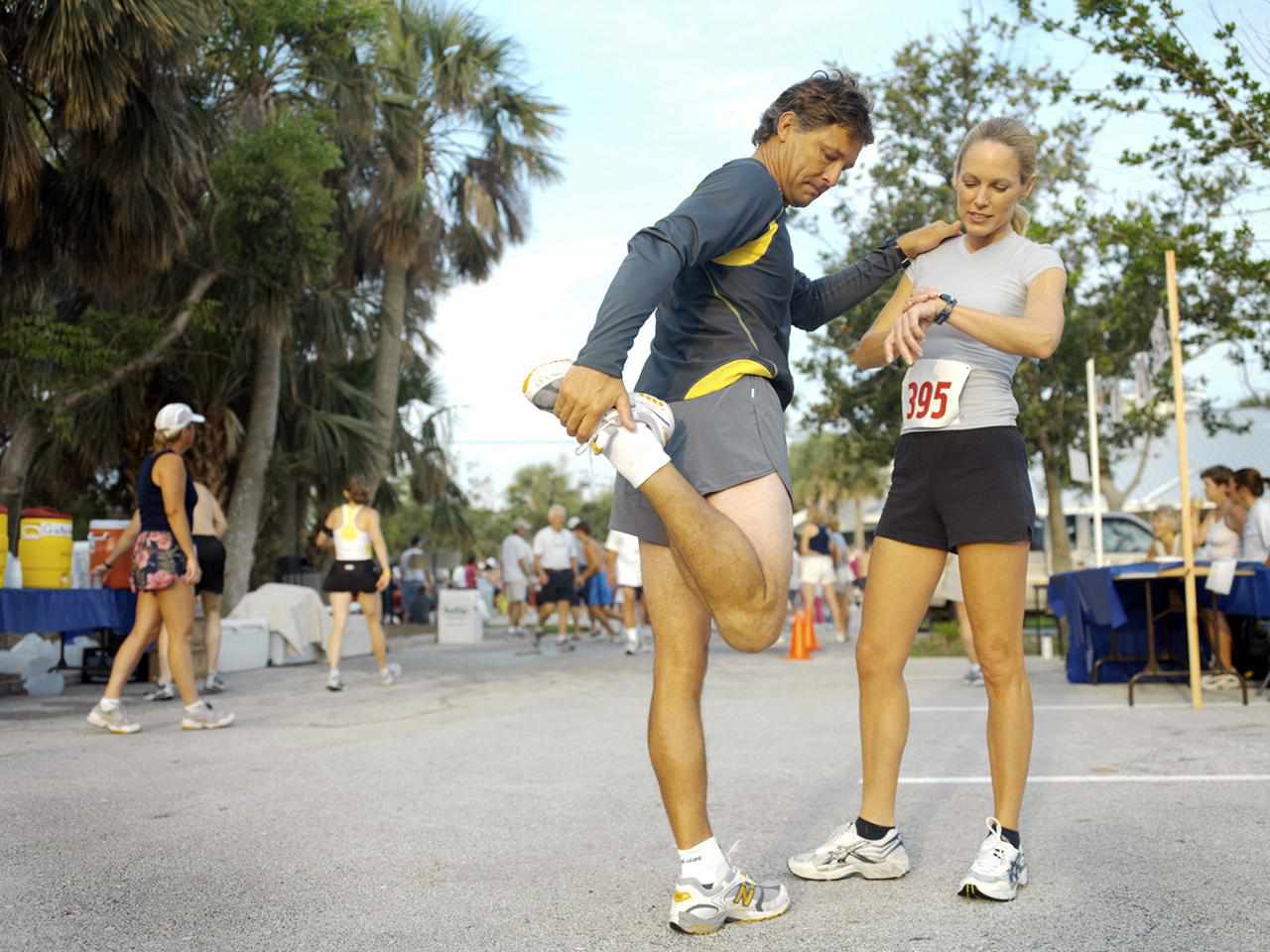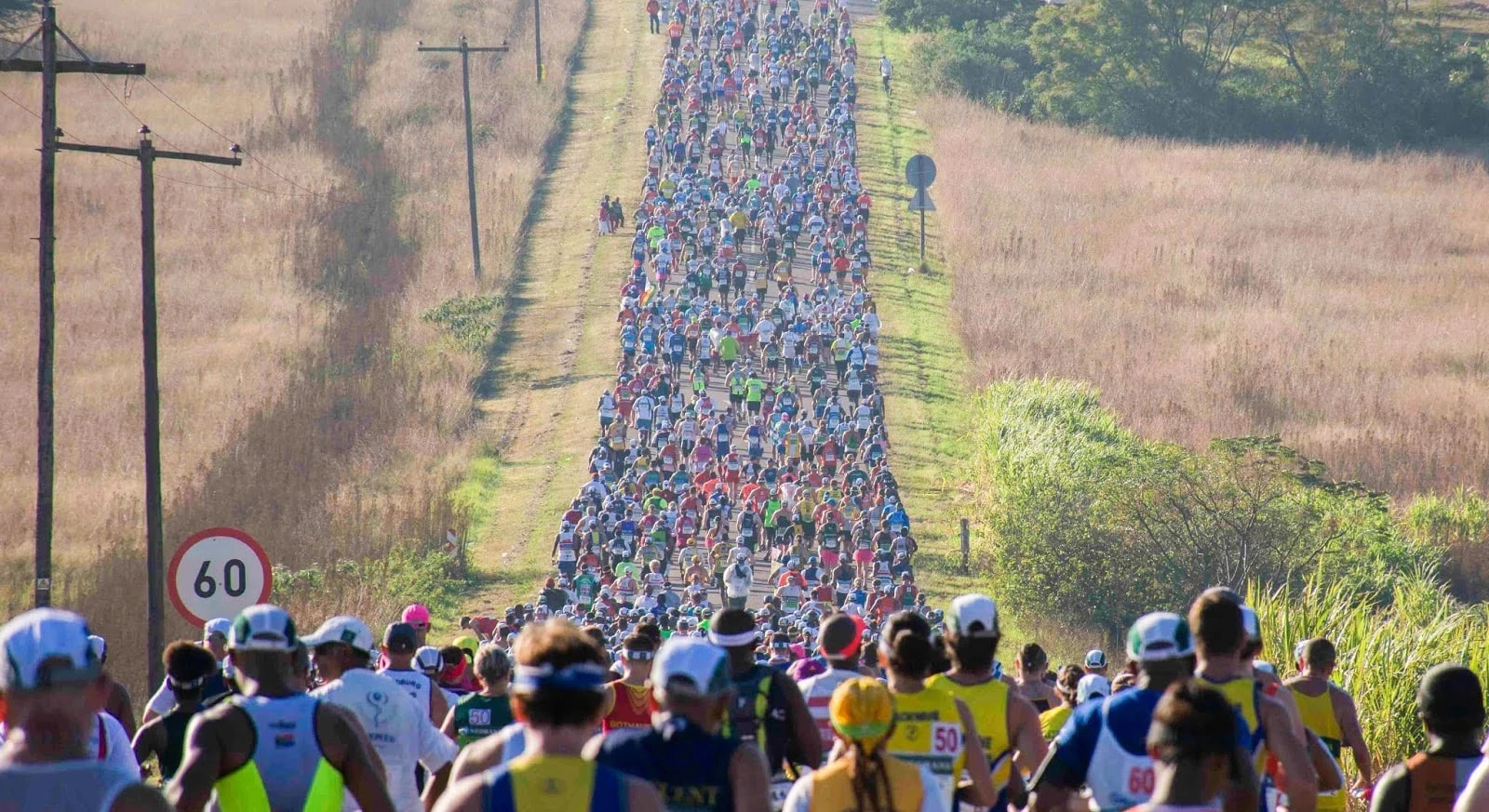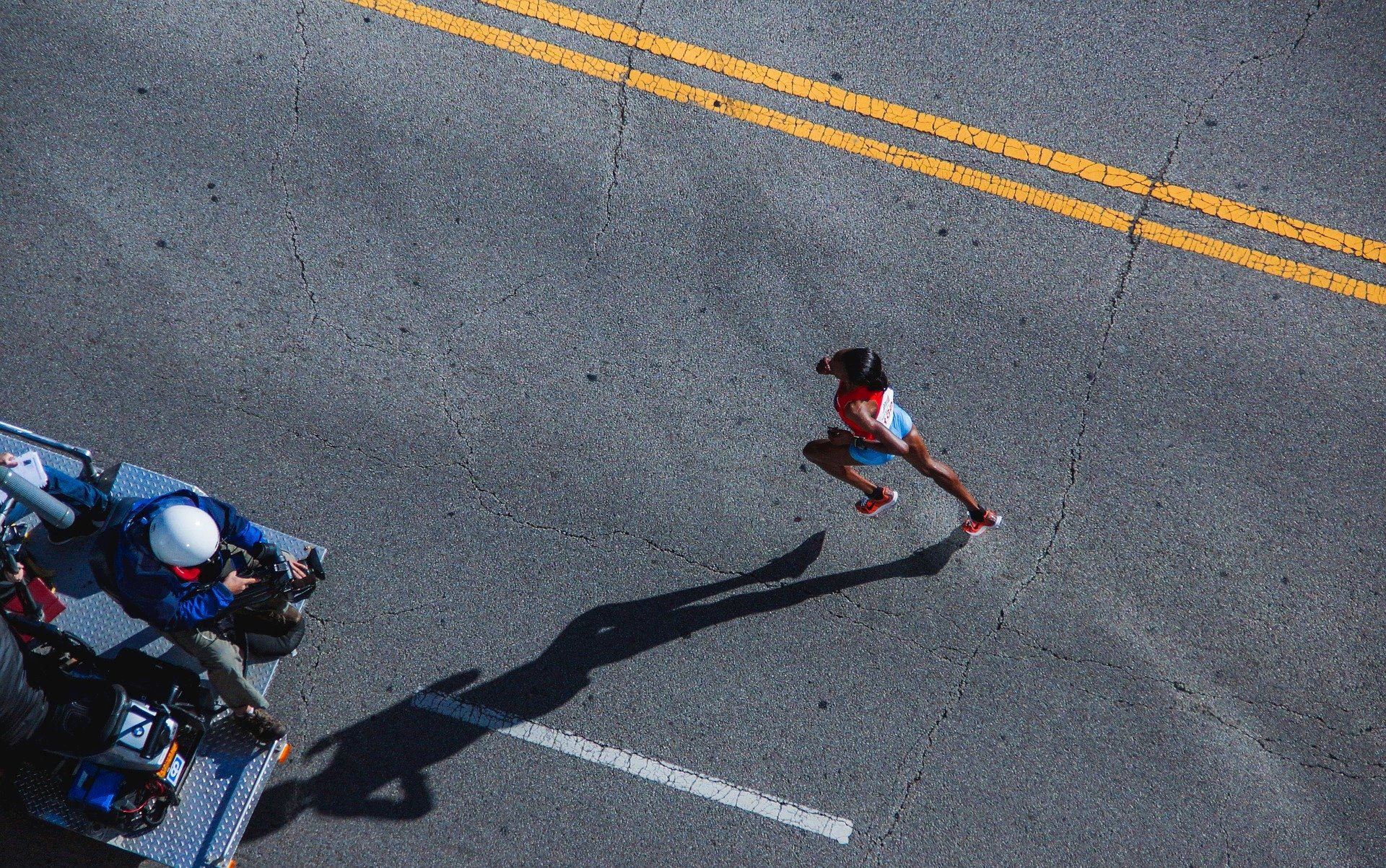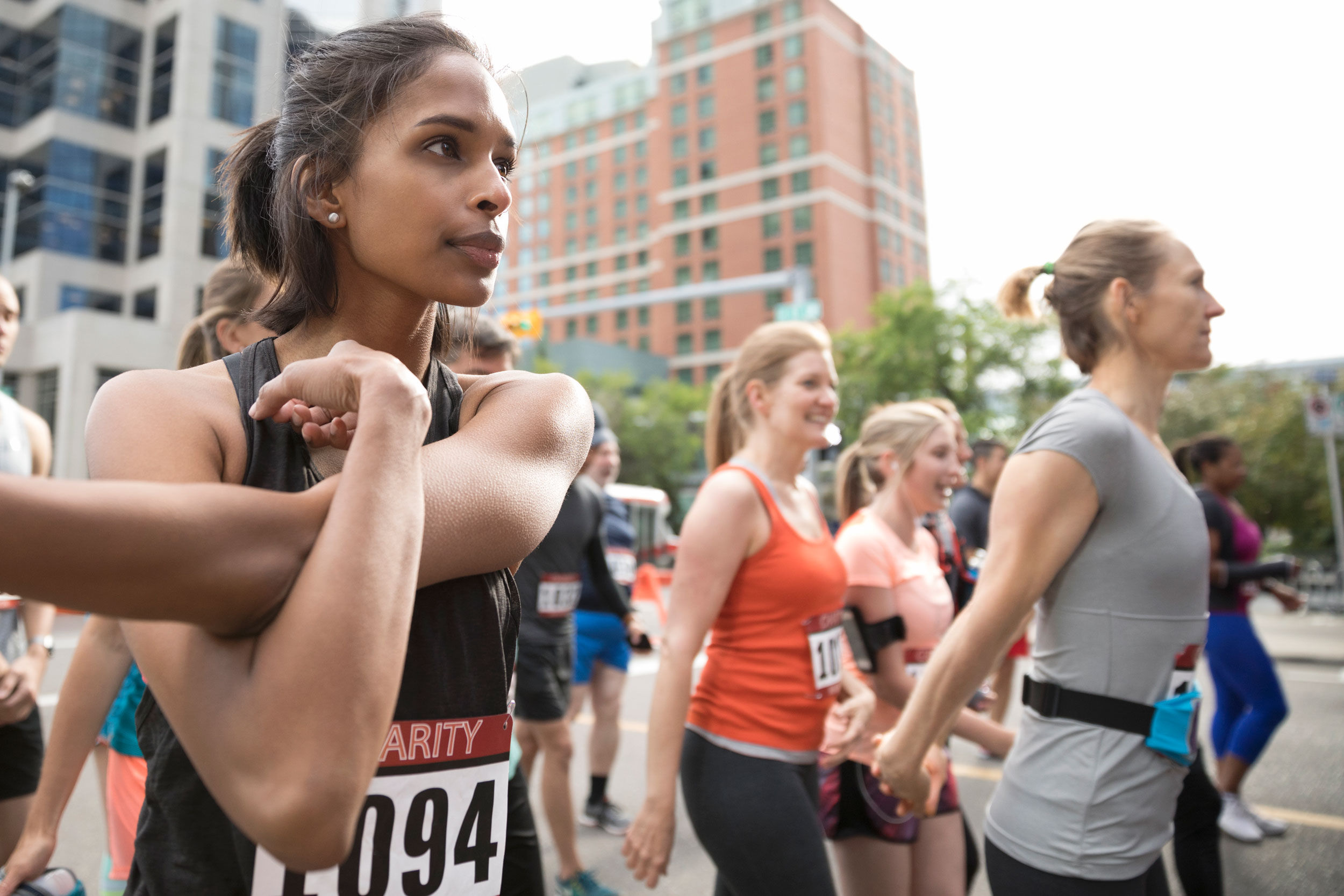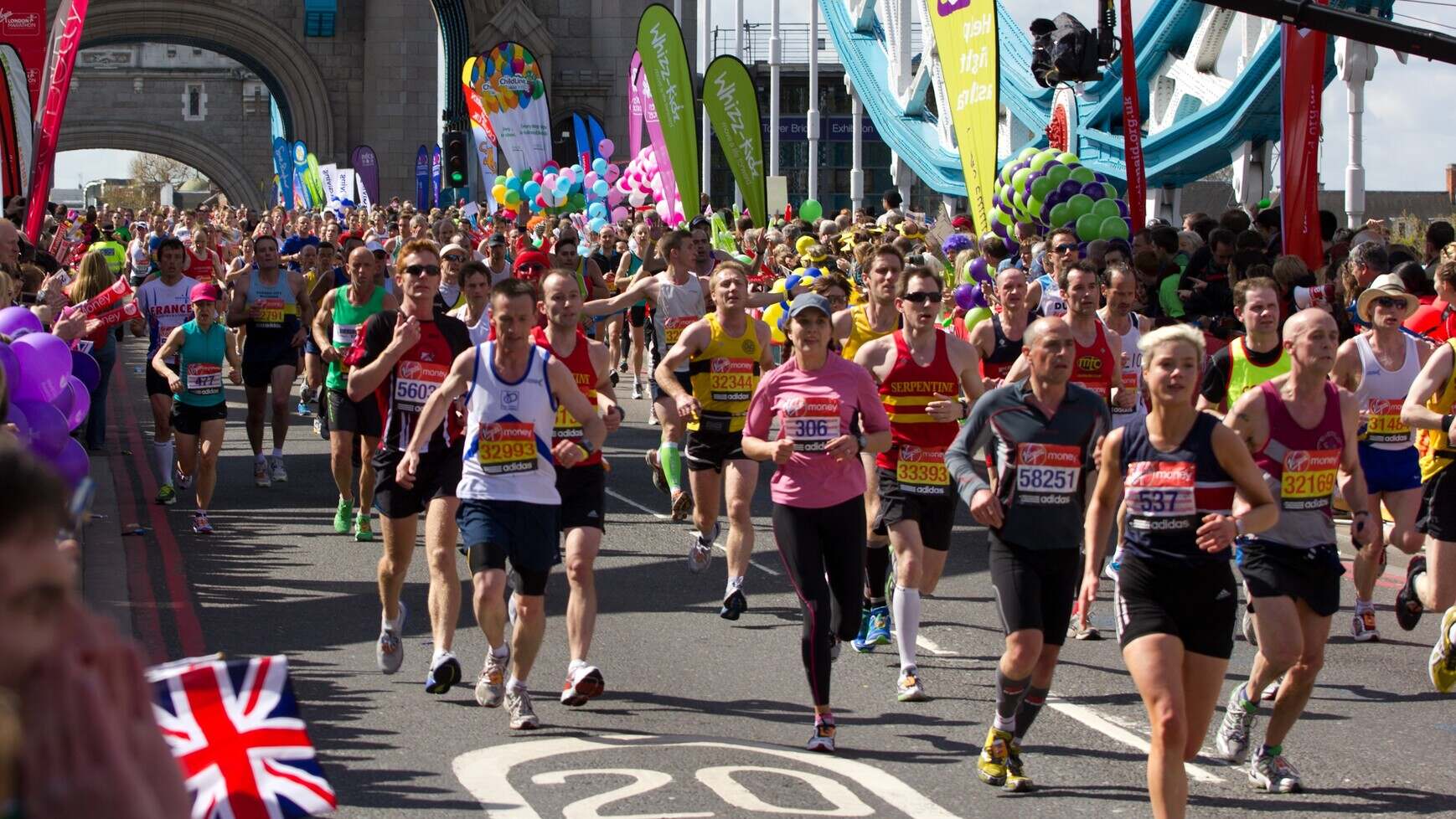

Featured
How Many Miles Is A Marathon
Modified: January 22, 2024
Looking to run a marathon? Discover how many miles are in a marathon and get featured training tips to help you reach the finish line.
How Many.Miles Is A Marathon
Introduction
Running a marathon is a remarkable achievement that showcases the human spirit and determination. It is a test of endurance both physically and mentally. But have you ever wondered, how many miles is a marathon? In this article, we will explore the distance of a marathon and dive into its historical background, famous marathons around the world, and the training required to conquer this grueling endeavor.
The marathon is one of the most iconic and prestigious races in the world. It is a long-distance running event with a fascinating history and a significant place in athletic events. Whether you are a seasoned runner or an enthusiastic spectator, understanding the distance of a marathon can deepen your appreciation for this remarkable feat of human athleticism.
So, how exactly is the distance of a marathon determined? Traditionally, a marathon is defined as a race covering a distance of 26.2 miles or 42.195 kilometers. The distance may seem arbitrary, but it has a historical significance that dates back to ancient Greece.
Legend has it that the very first marathon took place in 490 B.C. During the Battle of Marathon, a Greek messenger named Pheidippides was said to have run from the town of Marathon to Athens, a distance of approximately 26 miles, to deliver news of the victory over the Persians. This heroic act is believed to have inspired the modern-day race distance.
In 1908, during the Olympic Games held in London, the marathon distance was officially standardized to its current length of 26.2 miles. The race was extended by 385 yards to start at Windsor Castle so that it could finish in front of the royal box in the Olympic Stadium. Since then, this distance has become the gold standard for marathons worldwide.
The marathon is not just a race; it has transcended into a global phenomenon. Around the world, numerous marathons are held annually, attracting thousands of participants from all walks of life. These races differ in terrain, climate, and atmosphere, offering unique experiences for runners and spectators alike.
Whether it’s the prestigious Boston Marathon, the vibrant New York City Marathon, or the scenic Berlin Marathon, each race has its own charm and allure. These marathons have become a symbol of human achievement, inspiring individuals to push their limits and accomplish the seemingly impossible.
Definition of a Marathon
A marathon is a long-distance race that covers a distance of 26.2 miles or 42.195 kilometers. It is a test of endurance, stamina, and mental strength. The word “marathon” itself has its roots in ancient Greek history and mythology.
The term “marathon” is derived from the legend of Pheidippides, a Greek messenger who is said to have run from the city of Marathon to Athens to deliver news of the Greek victory over the Persians in the Battle of Marathon. This fabled journey of approximately 26 miles is said to have inspired the modern-day race distance.
The distance of a marathon was officially standardized in 1908 during the Olympic Games held in London. The race was extended by 385 yards to start at Windsor Castle so that it could finish in front of the royal box in the Olympic Stadium. Since then, the distance of 26.2 miles has become the standard for marathons worldwide.
Marathons are typically held as organized races, open to both professional athletes and amateur runners. Participants can choose to run competitively or simply for personal achievement. The race can take place on various terrains, including roads, trails, and even tracks. It is a remarkable test of human endurance, pushing the limits of physical and mental capabilities.
Marathons are known for the incredible sense of camaraderie and support among participants. It is not just a race against others but also a personal battle against one’s own limitations. Runners often train for months in preparation, following rigorous training programs to build stamina and endurance. Crossing the finish line after completing a marathon is a moment of tremendous accomplishment and triumph.
Participating in a marathon requires dedication, discipline, and determination. It is not only a physical endeavor but also a mental and emotional journey. It challenges individuals to overcome obstacles, push through pain, and tap into their inner strength. Running a marathon is an experience that can change lives, instilling a sense of achievement and self-belief that extends far beyond the race itself.
Historical Background
The history of marathon running can be traced back to ancient Greece, where it was deeply rooted in mythology and historical events. The most famous story of the origins of the marathon comes from the Battle of Marathon in 490 B.C. during the Greco-Persian Wars.
According to legend, the Persians had invaded Greece and were met by a combined force of Athenians and Plataeans. The Athenians, outnumbered and facing overwhelming odds, managed to defeat the Persian army. To deliver news of the victory to the people of Athens, a messenger named Pheidippides was said to have been dispatched to run from the town of Marathon to Athens.
Pheidippides reportedly ran the distance of approximately 26 miles without stopping, reaching Athens to deliver the news before collapsing and dying from exhaustion. This heroic act of endurance is said to have inspired the modern-day marathon race.
The first organized marathon race took place during the inaugural modern Olympic Games in Athens in 1896. The race course was designed to resemble the route taken by Pheidippides, from the town of Marathon to the Panathenaic Stadium in Athens. Spiridon Louis, a Greek runner, emerged as the victor, cementing the marathon’s place in athletic history.
The marathon’s popularity continued to grow, and it became a staple event in subsequent Olympic Games. However, the exact distance of the marathon varied in the early years. It wasn’t until the 1908 Olympic Games in London that the current distance of 26.2 miles was established.
During the 1908 race, the distance was extended by 385 yards so that the race could start at Windsor Castle and finish in front of the royal box in the Olympic Stadium. This additional distance became known as the “Royal Box Distance” and has been part of the marathon distance ever since.
Since then, marathons have continued to captivate athletes and spectators alike. The race has evolved from its ancient origins to become a global phenomenon, with thousands of participants competing in marathons around the world each year. From elite athletes pushing the boundaries of human performance to individuals seeking personal accomplishment and overcoming their own challenges, the marathon remains a testament to the human spirit and the pursuit of extraordinary achievements.
The Marathon Distance
The distance of a marathon is internationally recognized as 26.2 miles or 42.195 kilometers. But why is this distance specifically chosen for the marathon? The answer lies in the historical significance and evolution of the race.
The marathon distance was first standardized during the 1908 Olympic Games held in London. The race organizers wanted the course to start at Windsor Castle and finish in front of the royal box in the Olympic Stadium. As a result, the course was extended by 385 yards, adding the extra distance to the traditional marathon length.
The standardization of the marathon distance to 26.2 miles allowed for consistency in race courses worldwide. It provided a benchmark for athletes to compare their performances and enabled the establishment of official records and rankings.
The marathon distance is not only a physical challenge but also a mental one. Running 26.2 miles requires endurance, stamina, and sheer determination. It tests the limits of human capability and pushes individuals to their maximum potential.
The distance of a marathon is not to be underestimated. It requires months of training and preparation to build the necessary physical and mental strength. Runners must gradually increase their mileage, incorporate speed and endurance workouts, and develop a race strategy to conquer the distance.
Covering 26.2 miles on foot is no small feat, and the difficulty of the marathon distance is part of its allure. It is a true test of a runner’s determination, resilience, and ability to persevere in the face of challenges.
The marathon distance also presents unique challenges for race organizers. They must ensure that the course is accurately measured and marked, with aid stations strategically placed to provide water and support to runners along the way. Spectators play a crucial role in offering encouragement and cheering on the participants, helping to create an atmosphere of excitement and support.
Despite the physical and mental demands of running a marathon, thousands of individuals from all over the world take on the challenge each year. The allure of the marathon lies not only in the distance itself but also in the sense of achievement and personal growth that comes with crossing the finish line.
Completing a marathon represents a significant milestone in a runner’s life. It is an accomplishment that brings a profound sense of pride, accomplishment, and satisfaction. The marathon distance serves as a reminder that with dedication, perseverance, and a little bit of grit, we are capable of achieving extraordinary things.
Conversion to Other Units
While the marathon distance is commonly measured in miles and kilometers, there are other units of measurement that can be used to express this challenging feat of endurance. Here are some common conversions for the marathon distance:
- Miles: The standard marathon distance is 26.2 miles. This equates to approximately 138,435 feet or 42,195 meters.
- Kilometers: The marathon distance is also commonly expressed as 42.195 kilometers. This equivalent to approximately 26.2 miles.
- Yards: Converting the marathon distance to yards, we get approximately 46,112 yards.
- Meters: The marathon distance is approximately 42,195 meters or 42.195 kilometers.
- Feet: The marathon distance is roughly equal to 138,435 feet or 26.2 miles.
These conversions can come in handy when comparing marathon distances in different measurement systems, or when planning and designing race courses using different units of measurement.
It’s important to note that these conversions are approximate and may vary slightly depending on the specific race course or route. Race organizers and course measurers take great care in accurately measuring the marathon distance to ensure fair and standardized races.
When training for a marathon, understanding the different units of measurement can help in setting training goals and tracking progress. It allows runners to set milestones and benchmarks along their training journey.
Regardless of the unit of measurement used, the marathon distance remains a formidable challenge that requires commitment, discipline, and perseverance. Converting the distance to different units can provide insight into the magnitude of this athletic endeavor and inspire athletes to push themselves further.
Factors Affecting the Distance
While the standard marathon distance is recognized as 26.2 miles or 42.195 kilometers, there are several factors that can affect the actual distance a runner covers during a marathon race. These factors can impact the course layout, terrain, and overall race experience. Here are some of the key factors that can influence the distance of a marathon:
- Course Design: The design and layout of the marathon course can impact the overall distance. Race organizers carefully measure and mark the course to ensure that it meets the standard length. However, factors such as turns, elevation changes, and detours can slightly alter the distance.
- Measurement Accuracy: Accurately measuring the distance of a marathon is crucial. Race organizers employ professional course measurers who use specialized equipment to ensure the accuracy of the distance. However, small variations can still occur due to human error or other factors.
- Route Certification: To ensure the accuracy of the marathon distance, race courses can go through a certification process. Organizations such as the International Association of Athletics Federations (IAAF) and national governing bodies for running sports enable race organizers to certify their courses, ensuring they adhere to the standard marathon distance.
- Weather Conditions: Extreme weather conditions can impact the distance covered during a marathon. Strong winds, heavy rain, or excessive heat can slow down runners or necessitate changes to the course, affecting the overall distance.
- Running Tangents: For runners seeking peak performance, running tangents—taking the shortest and most direct route—can be a crucial strategy. However, not all runners are able to navigate the course perfectly, which can result in running slightly more or less distance than the official marathon distance.
- GPS Variations: With the widespread use of GPS-enabled devices, some runners may rely on personal tracking devices during a marathon. However, GPS devices are not always completely accurate and can vary in their readings, leading to slight discrepancies in the reported distance.
These factors highlight the complexities involved in measuring and running a marathon. While every effort is made to ensure the accuracy and standardization of the marathon distance, unforeseen circumstances and variables can affect the actual distance covered during a race. Nevertheless, runners can rest assured that race organizers prioritize accuracy and fairness in course design and measurement to provide a meaningful and consistent marathon experience.
Famous Marathons Around the World
Marathons have become a global phenomenon, attracting participants and spectators from all corners of the world. These races offer unique experiences, showcasing the beauty of different cities and landscapes while challenging runners to push their limits. Here are some of the most famous marathons around the world:
- Boston Marathon (Boston, United States): Considered one of the oldest and most prestigious marathons, the Boston Marathon attracts elite runners and enthusiastic amateurs alike. Known for its challenging course and rich history, the race takes place on Patriot’s Day in April, drawing massive crowds of spectators cheering on the runners.
- New York City Marathon (New York, United States): The New York City Marathon is one of the largest and most iconic marathons in the world. Meandering through the city’s five boroughs, the race offers a unique and diverse experience for participants. The grand finale takes place in Central Park, where runners are greeted with cheers from thousands of spectators.
- London Marathon (London, United Kingdom): Held annually in the vibrant city of London, this marathon is known for its incredible atmosphere and iconic landmarks along the course. Runners pass by historical sites such as the Tower Bridge and Buckingham Palace, creating a memorable experience for participants and spectators alike.
- Berlin Marathon (Berlin, Germany): The Berlin Marathon is renowned for its fast and flat course, making it a popular choice for runners aiming to achieve personal best times. The race takes participants through the heart of Berlin, passing significant landmarks including the Brandenburg Gate and the Berlin Victory Column.
- Tokyo Marathon (Tokyo, Japan): As one of the six World Marathon Majors, the Tokyo Marathon attracts international participants and showcases the unique blend of traditional and modern aspects of Japan’s capital city. Runners pass through Tokyo’s vibrant neighborhoods, providing a captivating glimpse into the culture and energy of the city.
- Chicago Marathon (Chicago, United States): Known for its flat and fast course, the Chicago Marathon is a favorite among runners seeking to achieve personal records. The race routes participants through the neighborhoods of Chicago, with the iconic skyline as a backdrop. The enthusiastic crowd support and festive atmosphere make it a memorable experience for all.
- Paris Marathon (Paris, France): The Paris Marathon combines iconic landmarks, such as the Eiffel Tower and Notre-Dame Cathedral, with a scenic route alongside the River Seine. Runners from around the world flock to the City of Light to take part in this prestigious race, immersing themselves in the beauty and charm of the French capital.
These are just a few examples of the many incredible marathons held worldwide. Each race offers its own unique features, including stunning scenery, challenging terrains, and vibrant atmospheres. Whether runners are seeking a personal best time, exploring new cities, or simply taking on the ultimate endurance challenge, these famous marathons provide unforgettable experiences and lifelong memories.
Training for a Marathon
Training for a marathon requires careful planning, dedication, and consistent effort. It is a journey that involves building endurance, strength, and mental fortitude. Whether you’re a seasoned runner or a beginner taking on your first marathon, a structured training program is essential to prepare your body and mind for the 26.2-mile challenge. Here are some key aspects to consider when training for a marathon:
- Gradual Progression: It’s important to follow a training program that allows for gradual progression in mileage and intensity. Begin with a base-building phase, gradually increasing your weekly mileage to develop a solid foundation.
- Long Runs: Incorporate weekly long runs into your training. These runs gradually increase in distance to simulate the marathon distance and build endurance. Long runs also help familiarize your body with running for extended periods.
- Speed and Tempo Workouts: Include speed and tempo workouts to improve your pace and overall fitness. These workouts could include intervals, hill repeats, or tempo runs at a sustained pace.
- Rest and Recovery: Allow ample time for rest and recovery. Proper recovery helps prevent injury and allows your body to adapt and become stronger. Listen to your body and incorporate rest days and lighter training weeks into your schedule.
- Cross Training: Mix in cross-training activities like swimming, cycling, or strength training to improve overall fitness, prevent overuse injuries, and provide variety in your training routine.
- Nutrition and Hydration: Maintain a balanced and nutritious diet to support your training. Fuel your runs with appropriate pre- and post-workout nutrition, and stay properly hydrated to optimize your performance.
- Mental Preparation: Train your mind as well as your body. Develop mental strategies to stay focused, motivated, and positive during the race. Visualization, positive self-talk, and setting realistic goals can help you overcome challenges and push through difficult moments.
- Practice Running in Race Conditions: Incorporate runs that mimic race conditions, such as running on similar terrain, in different weather conditions, or in larger groups of runners. This will help you gain familiarity and confidence for the actual race day.
- Tapering: Prioritize a tapering period in the weeks leading up to the marathon. Gradually reduce your training volume to allow your body to fully recover and be fresh for the race.
Remember that every runner is unique, and finding a training plan that suits your individual needs and goals is crucial. Consider working with a running coach or seeking guidance from experienced runners to tailor a training program specifically for you. Training for a marathon is a transformative journey that requires commitment and perseverance, but the sense of achievement and personal growth that comes from crossing the finish line is immeasurable.
Conclusion
In conclusion, the marathon is an iconic and challenging race that captivates the hearts and minds of runners and spectators around the world. With a distance of 26.2 miles or 42.195 kilometers, the marathon tests the endurance, strength, and mental fortitude of those who dare to take on the challenge. The historical significance of the marathon, stemming from the legendary run of Pheidippides, adds to its mystique and symbolic importance in the world of running.
Marathons have evolved into global events, with famous races held in cities like Boston, New York, London, Berlin, Tokyo, Chicago, and Paris. These marathons showcase the beauty of their respective locations and provide a platform for runners to push their limits and achieve remarkable feats. From the dedicated elite athletes striving for podium finishes to the everyday individuals seeking personal triumph, marathons inspire and unite people from all walks of life.
Training for a marathon requires discipline, dedication, and careful planning. Following a structured training program, incorporating long runs, speed workouts, and cross-training, while also focusing on proper nutrition and rest, is essential for success. Mental preparation is equally important, as runners must develop strategies to overcome challenges and stay motivated throughout the race.
As you embark on your marathon journey, whether it’s your first or your fiftieth, remember that the distance itself is just part of the story. The marathon is about personal growth, pushing boundaries, and achieving what you once thought was impossible. It is a powerful reminder of the strength and resilience of the human spirit.
So lace up your running shoes, train with determination, and have the courage to take on the marathon. Embrace the challenge, savor the journey, and when you cross that finish line, know that you have accomplished something extraordinary. The marathon is not just a race; it is a transformative experience that can change your life forever.
